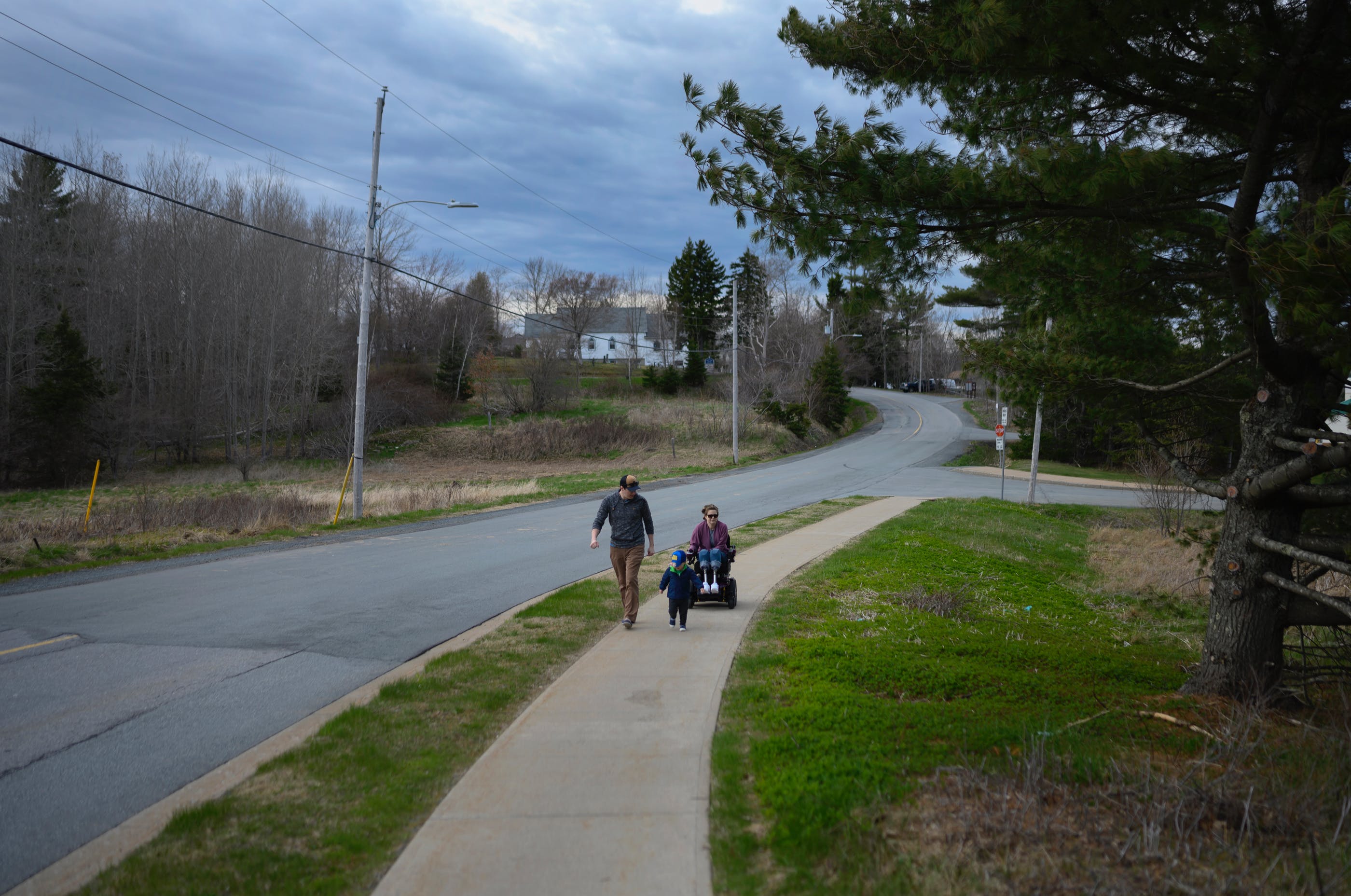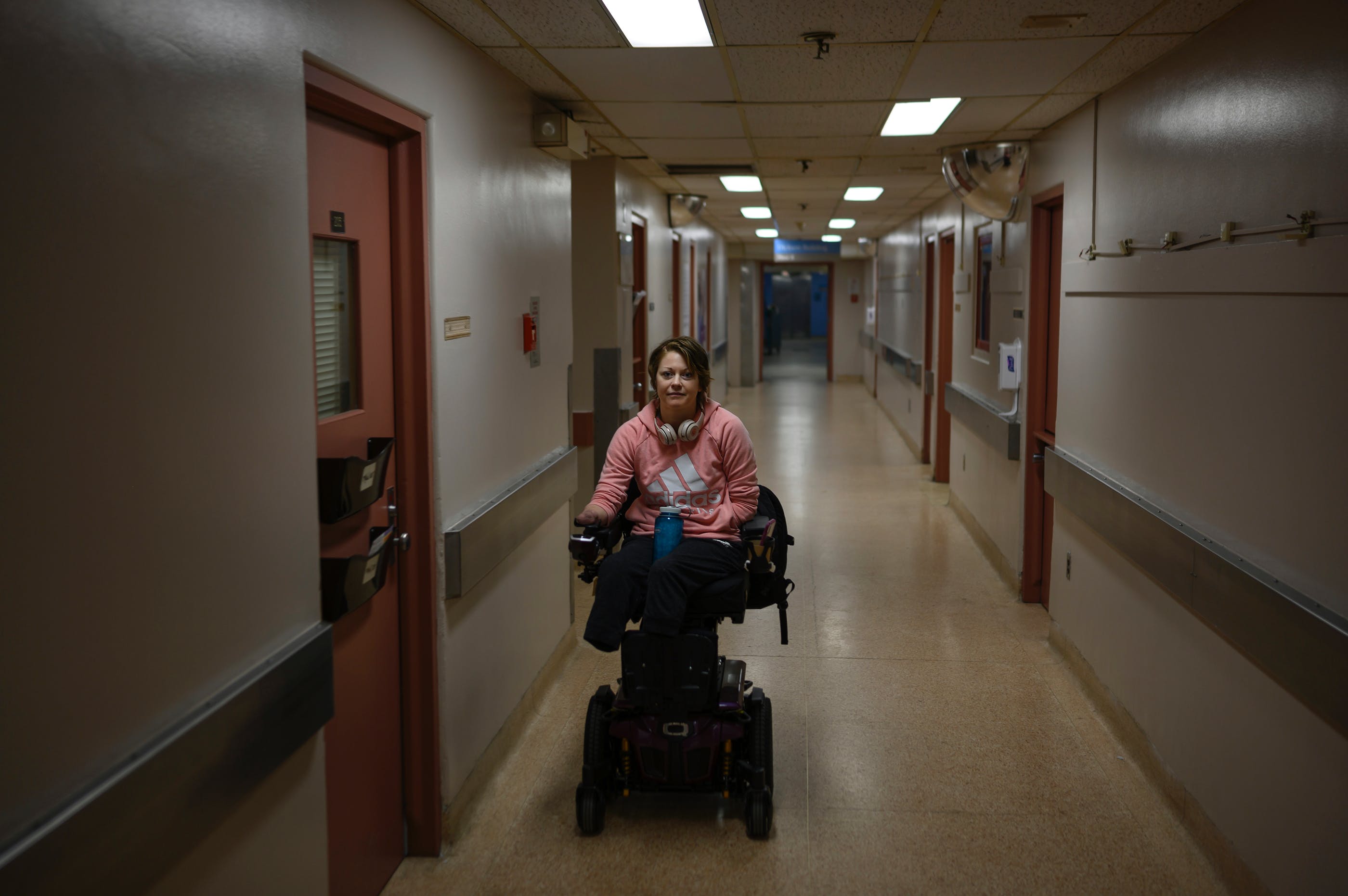Mothering Without Limits
Days after Lindsey Hubley gave birth to her son, she had to reenter the hospital with devastating medical problems.
But every challenge that motherhood has brought
is one to which she has risen.
LINDSEY HUBLEY HAD just four blissful days with her newborn baby Myles, four days spent inhaling the scent of his creamy skin, admiring his crown of light brown hair. She had just four days to savor the contentment of holding in her own two hands the eight pounds and six ounces that had been weighing on her pelvis for nine months. Then came the lethargy. The uncontrollable shaking. In the emergency room, doctors told Lindsey she was simply constipated. They gave her an enema and sent her home. Within 24 hours, the 33-year-old first-time mother was in an induced coma.
During delivery, Lindsey’s perineum had torn, a laceration so severe that a nurse told her she might never be able to have another vaginal birth. The tear was sewn up, and two days after the birth Lindsey was sent home. But a rare infection developed and quickly spread in her body: a necrotizing fasciitis, or flesh-eating disease, that started on her perineum, then spread to her limbs, stomach, hips, and buttocks. (Lindsey’s lawyer has told the Canadian Press that the infection was preventable — a piece of the placenta was accidentally stitched inside her after childbirth.) The infection became so severe that her body went into sepsis, a potentially fatal condition. A week later, in March 2017, doctors pulled her out of the induced coma to check her brain function, which they suspected was nonexistent. The first and only thing Lindsey said after waking was: “Myles.”

IT WAS CLOUDY AND GRAY on the April morning last year when Lindsey’s partner, Mike Sampson, pulled into the driveway of the three-bedroom bungalow they had recently purchased. It came with a wheelchair ramp.
It was day 420 of Myles’s life, the day Lindsey was released from the hospital for a second and, she hoped, final time. Myles had grown into a talkative, sandy-haired toddler, with a curved upper lip that twinned her own. Lindsey knew she was Myles’s mom. Rationally, she knew. But she didn’t feel like she was. By then, Myles had bonded with the other adults in his life. When he needed a diaper change, a bottle, or a hug, he went to Mike, a bubbly, athletic customer service manager for Hyundai with enough medical knowledge of Lindsey’s condition that you might mistake him for a doctor. Myles had also grown close to Mike’s parents, Larry and Jackie Sampson, who put their lives on hold, off and on, for more than a year to be Myles’s surrogate parents.

“There’s no book for this,” Lindsey tells me, her wide blue eyes welling with tears, when I visit her in late March 2019 at her home in suburban Halifax, a city of nearly half a million people in the Canadian province of Nova Scotia. From the moment I’d read about the lawsuit she filed in 2017 — Lindsey and Mike are suing the IWK Health Centre and five doctors for negligence over the years-long ordeal — I’d wondered how she was doing and what life was now like for her and Myles.
While we sit in her sunny living room, with Myles feeding her cucumber slices and zooming Dinky trucks along her arms, Lindsey tells me how she waited months in the hospital for the necrotizing fasciitis to demarcate, to reveal the boundary line between living tissue and the places where the blood vessels in her wrists and legs had died. Only then could doctors cut out the dead tissue. The Wiggles are blasting on the big-screen television mounted to the wall, and as Lindsey chats, her right arm occasionally clangs on a glass side table. Unfazed, she keeps talking. I’m surprised at the 35-year-old’s candor and vulnerability. It’s almost like she’s been waiting to share the details—no longer gruesome to her, though still painful — of her story of birth and rebirth.

Lindsey knew she was Myles’s mom. Rationally, she knew. But she didn’t feel like she was. Myles had bonded with the other adults in his life.
Lindsey shows me photos of her hands from spring 2017; they had turned black from the flesh-eating infection, she explains, and the smell, especially the one emanating from her left arm, was impossible to escape. “For a long time I was terrified of my fingers falling off,” she says. She flips through the images casually on her iPad, remarking on one that still unsettles her. In it, her black hands stroke Myles’s face. “But they were still my hands, right?” she asks.
They were — until day 89, when doctors removed both of her hands and wrists, and part of her left forearm. On day 120, they took her feet — her toes still polished royal blue in recognition of the baby boy she had carried — just below the knee on the left, and to the kneecap on the right. The doctors cut every last remnant of dead flesh from Lindsey’s body, from her hips, thighs, upper left arm, uterus, ovaries, fallopian tubes, cervix, and abdomen, which doctors had a hard time closing up because the infection had eaten through all the healthy tissue. It took 32 surgeries — almost one a week — to get to day 420, the day when Lindsey could leave the hospital and come home for good, the day she could finally be full-time mom to Myles.